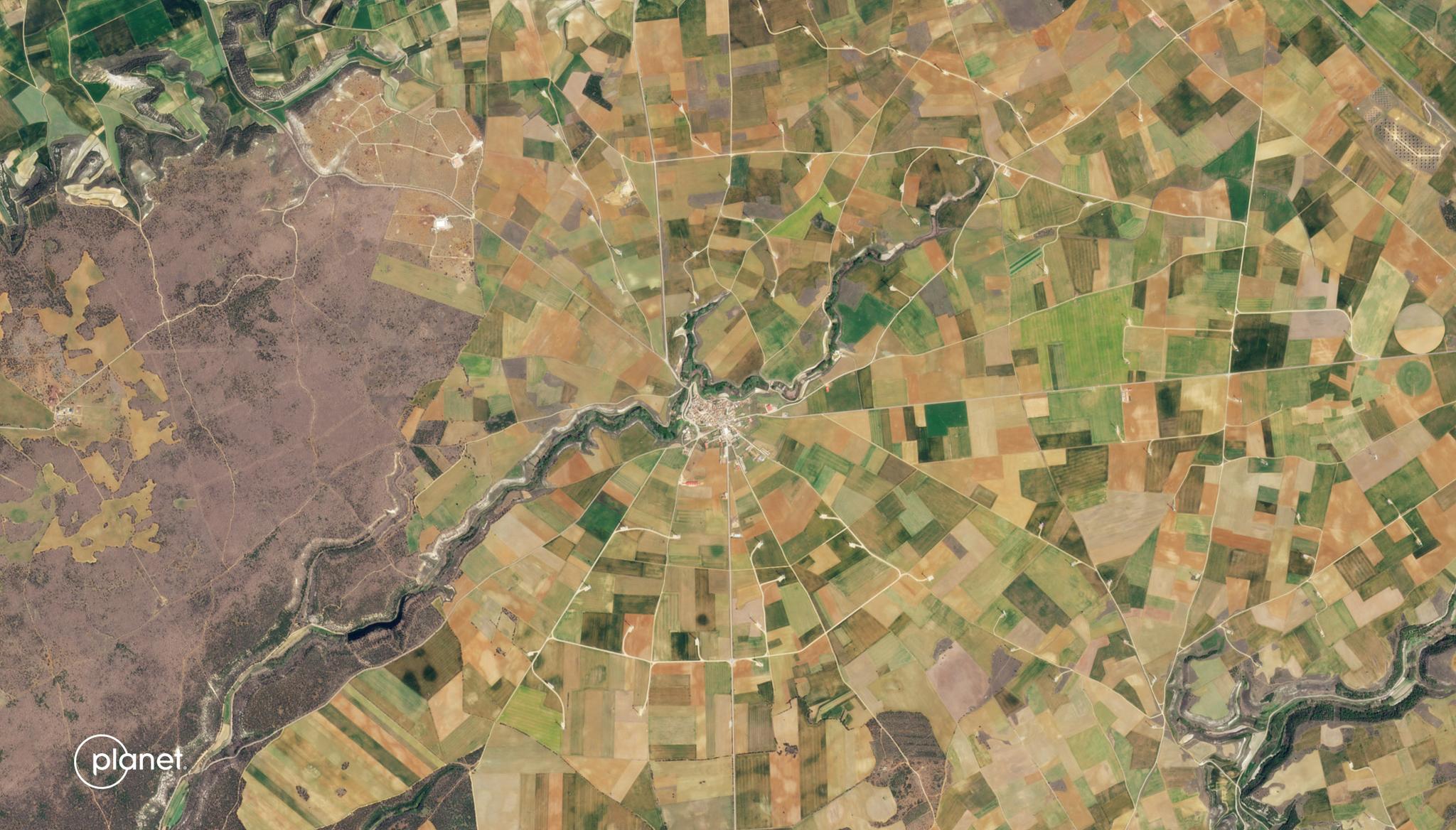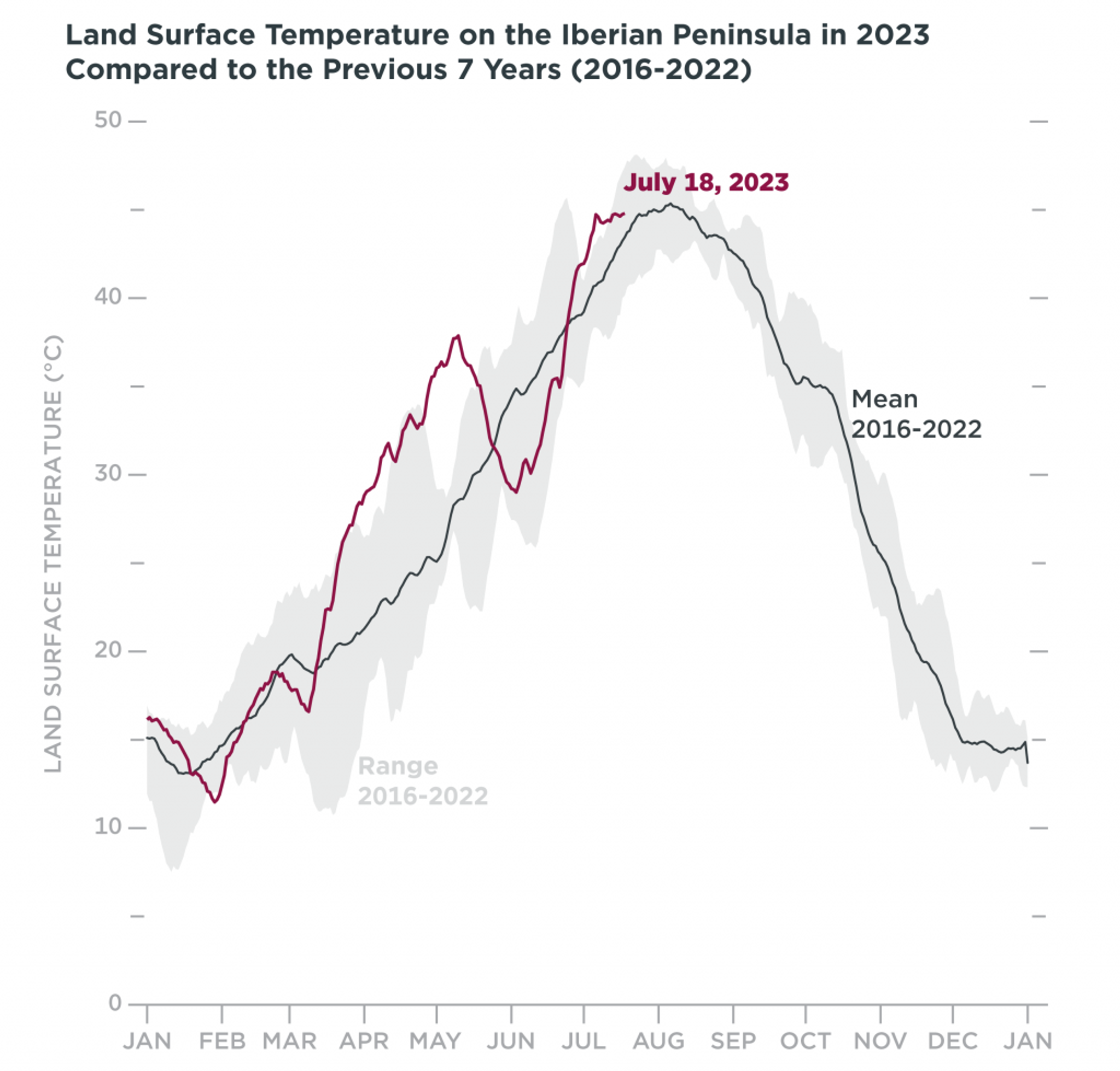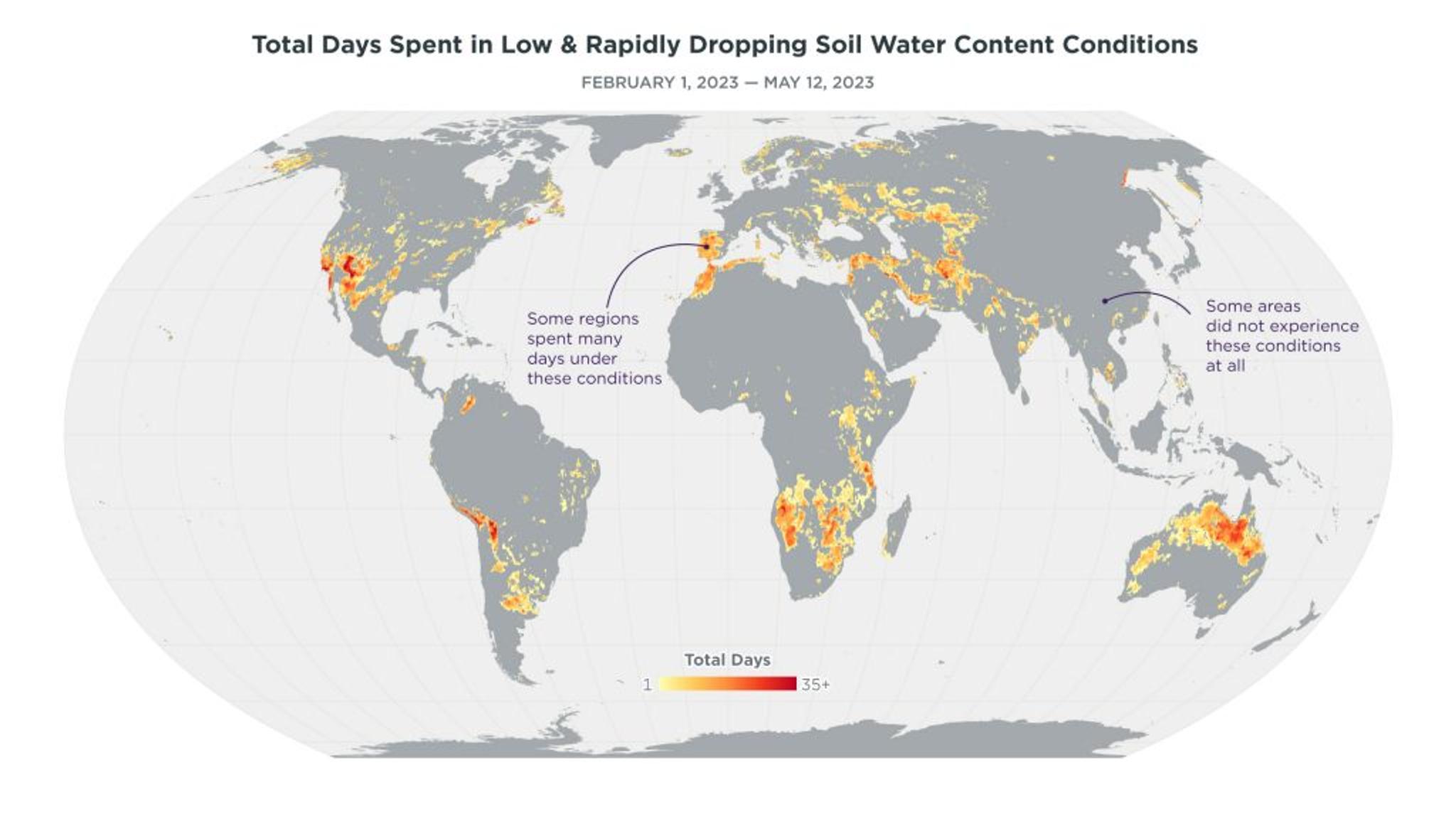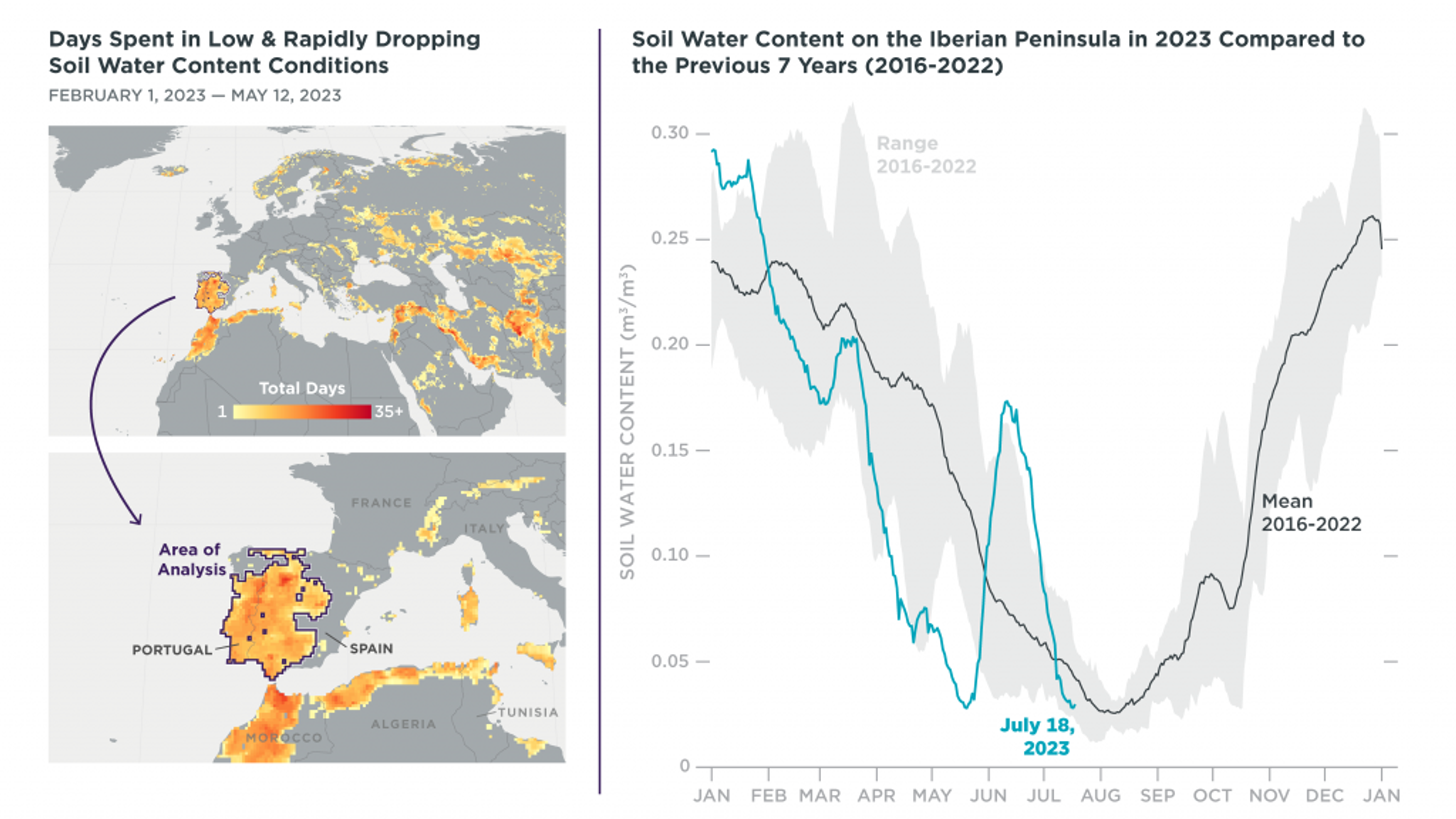Flash Drought Hotspots: Iberian Peninsula

PlanetScope image of fields around Castromonte, Spain on April 18, 2023. © 2023, Planet Labs PBC. All Rights Reserved.
StoriesAuthors: Ryder Kimball & Steve Levay
Special thanks to: Max Borrmann, Arjan Geers, and Megan Zaroda
The Mediterranean climate, once an alluring promise of balmy weather and picturesque sunshine, has adopted more alarming associations. Scorching temperatures and raging infernos this summer have prompted authorities to plead with residents to stay indoors during the day’s hottest hours. In naming the sweltering specter, officials evoke the mythical underworld figures of “Cerberus” and “Charon.” Others call it by a simpler moniker: heat wave.
It’s the third spell this summer to afflict the Iberian Peninsula, the stretch of land jutting out of southwestern Europe that contains the countries of Spain and Portugal (among others). A high-pressure system called an anticyclone reached the region from Africa and created a heat dome, thrusting the sizzling peninsula into peril with both atmospheric and land surface temperatures (LST) routinely exceeding 40°C (104°F) across the region.

Land Surface Temperature (LST) from 2023 over an area of the Iberian Peninsula where Planet’s Soil Water Content data showed notable dryness earlier in the year (see map of area below). A rolling average from the previous 14 days is shown in magenta. The black line represents the average measurement for that particular day of the year throughout the previous 7 years (2016-2022) and the gray area captures the range of measurements throughout the time period.
For the Iberian Peninsula, the heat waves are severe but not surprising. Climate change is making events like these more frequent and intense, particularly so in Europe. Temperatures above 40° centigrade and red-colored maps may dominate headlines, but the underlying story includes profound dryness over a longer timescale. The recent heat waves arrived in the wake of years-long drought, with Spain receiving nearly 30% less rainfall this hydrological year and April marking the peninsula’s driest month on record.
Climate change has a tendency to speed up the clock. Since the 1950s, flash droughts—dry conditions occurring rapidly (often within weeks)—are becoming more common than the typical slow-moving ones, new research shows. They’re harder to monitor and difficult to forecast, but planetary forensics can help identify and analyze particularly drought-prone regions.
Planet’s Soil Water Content (SWC) dataset captures the conditions that signal drought using granular, real-time measurements. A team at Planet developed a methodology that highlights areas that reach a certain threshold for dryness and changes in soil moisture. These “hotspots” are warning indicators of potential flash droughts, and by counting the number of days any given area saw hotspot conditions those regions can bring to light the severity of dryness across time. Apply this to the entire planet and a dashboard of at-risk regions emerges.

Isolating flash drought risk hotspots by measuring the number of days a region experienced the rapid change conditions. This map designates each pixel with a color based on the number of days it showed low and decreasing conditions from February 1 to May 12, 2023. In this visualization, 1 = 1 day, 30 = 30 days during that period. Areas that are darker red were in hotspot status more frequently.
We wanted to look at more precise and detailed data for the hotspots revealed on the map. In the Iberian Peninsula, the closer look is concerning. The region has remained drier than the recent average for much of the year, but this summer has shown severe swings in conditions. SWC precipitously declined starting in March, began rising at the end of May following a period of flooding, and then underwent a second period of rapid drying afterwards. Even with the flooding, the dryness in the Iberian peninsula has been alarmingly low. Levels fell to the lowest readings in the past 7 years of our measurements for stretches of April and May.

Soil Water Content (SWC) from 2023 over an area of the Iberian Peninsula where an analysis of Planet’s data (see maps) showed notable dryness earlier in the year. A rolling average from the previous 14 days is shown in teal. The black line represents the average measurement for that particular day of the year throughout the previous 7 years (2016-2022) and the gray area captures the range of measurements throughout the time period.
Spain and Portugal’s economies are strongly reliant on tourism and agriculture, two industries that will be particularly harmed by higher temperatures and drier conditions. The Spanish government has already approved a €2 billion plan to support farmers amid the crisis. But the situation is so dire that some Spaniards are excavating millennium-old water channels to help their crops.
When it’s do or die, every tool available helps. Tracking rapid drought changes at this scale and tempo helps policymakers decide the optimal proactive measures. Water managers can, for example, make allocations to more efficiently meet agricultural water demand. And for those managing wildfires, knowing when SWC dips below certain thresholds serves as a vital alert to increasing fire risk.
Zoom back out to the global raster and it’s clear that the Iberian Peninsula is not alone in these conditions. But that’s little comfort to anyone paying attention. We’ll be taking a closer look at the other hotspot regions that have recently experienced rapid drying in the coming weeks and how they compare to historical data.

Ready to Get Started
Connect with a member of our Sales team. We'll help you find the right products and pricing for your needs

